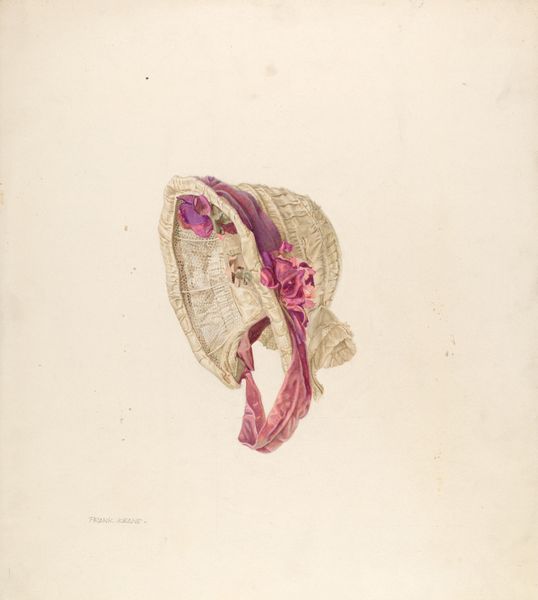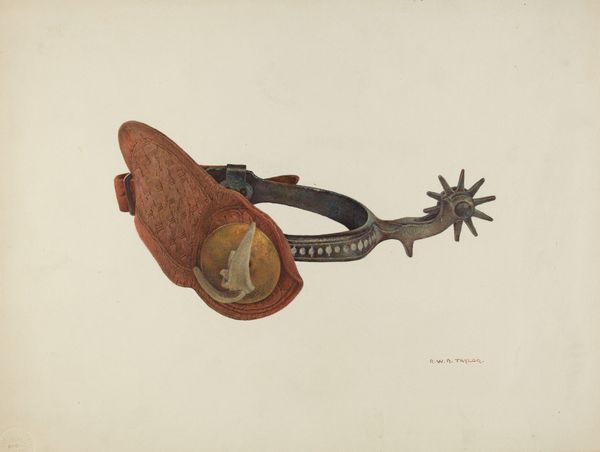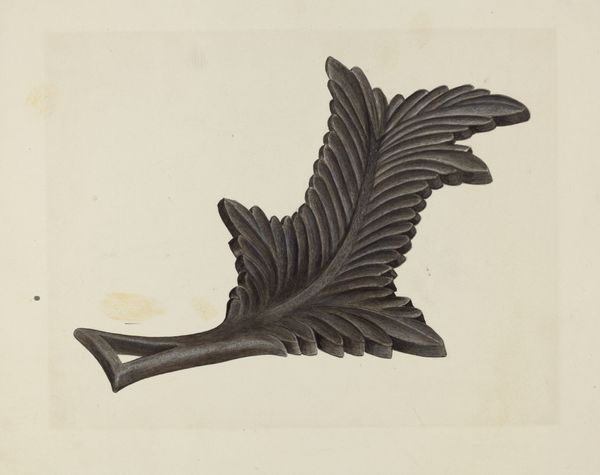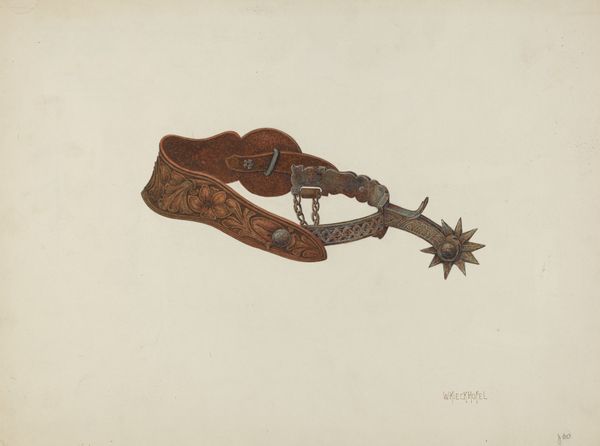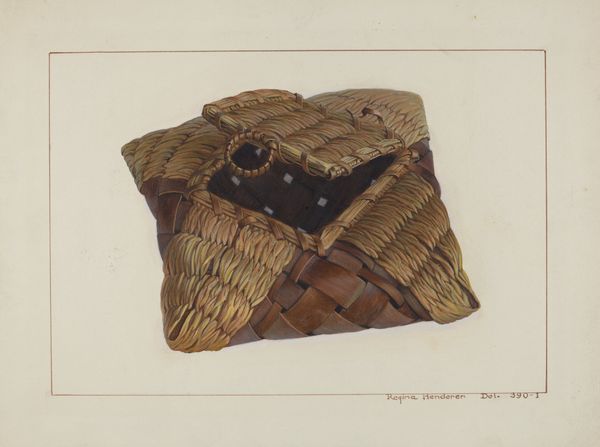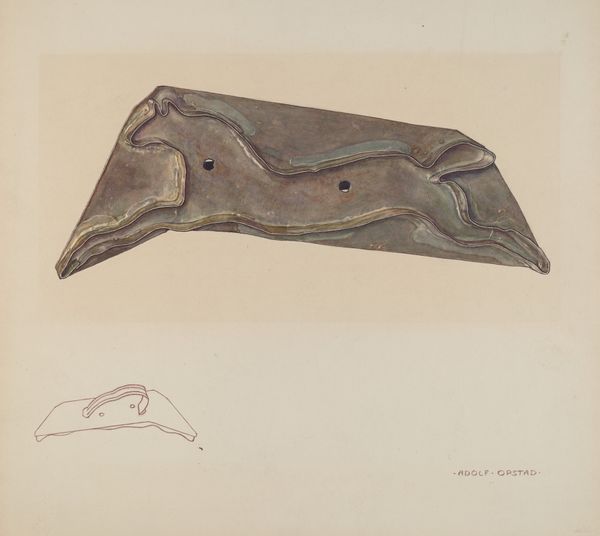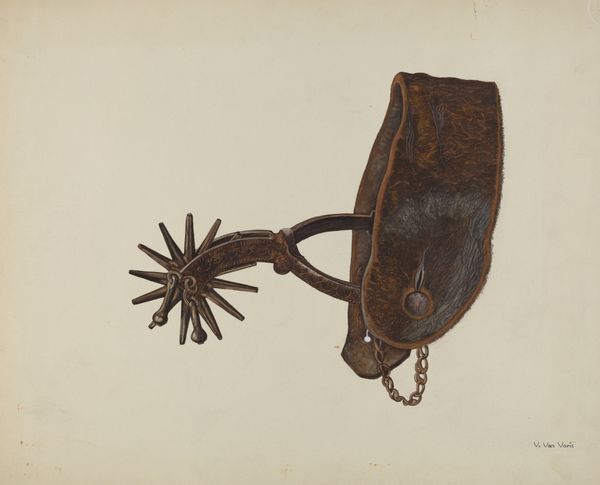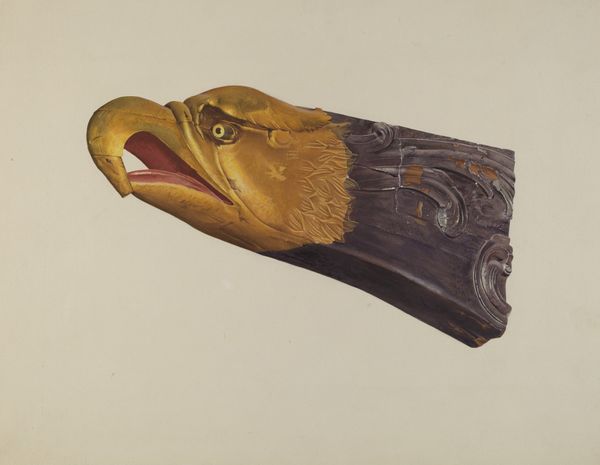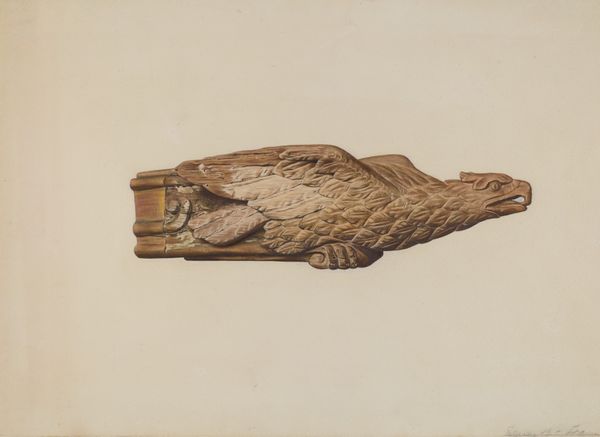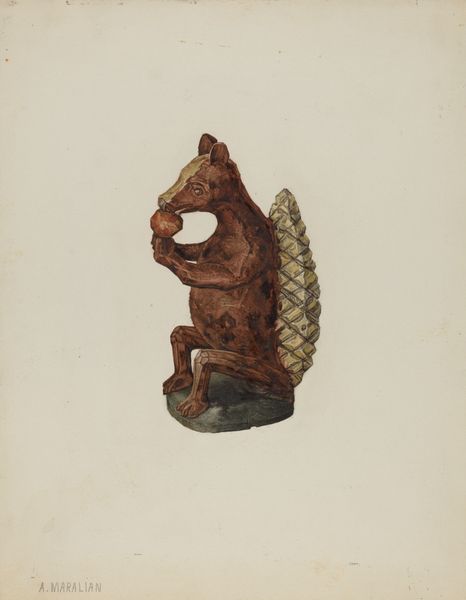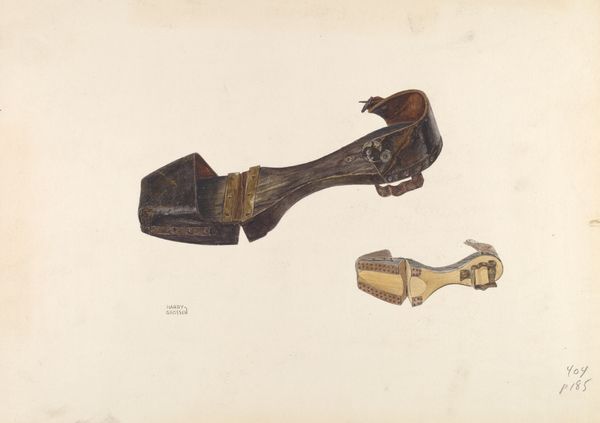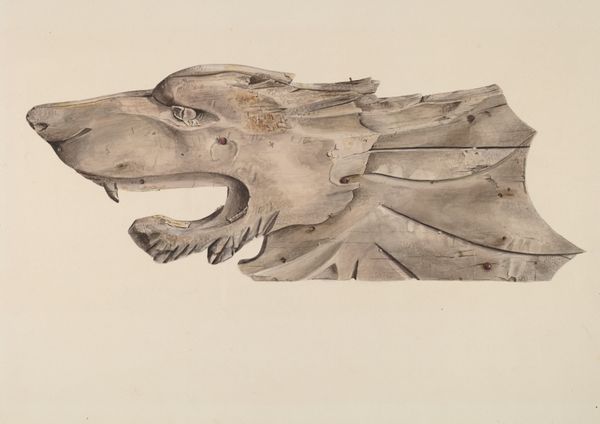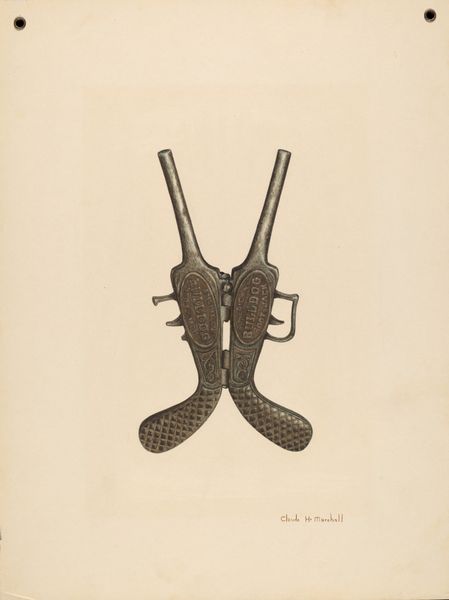
drawing, watercolor
#
portrait
#
drawing
#
figuration
#
watercolor
#
watercolour illustration
#
watercolor
Dimensions: overall: 47.7 x 38.1 cm (18 3/4 x 15 in.) Original IAD Object: 17" high; 7" long
Copyright: National Gallery of Art: CC0 1.0
Curator: Here we have Chris Makrenos' "Hand Puppet - Snapdragon," dating from about 1936. The medium is watercolor and drawing. What are your first impressions? Editor: I'm immediately struck by the bold, somewhat unsettling image of the puppet’s head. The texture is wonderful; you can almost feel the material through the rendering. It seems so visceral and alive! Curator: The creation and utilization of such a puppet could offer a window into the artist's societal position and how puppetry was viewed at the time. Was it for political commentary, or purely entertainment? The materials also matter; the craft speaks to an intention. What was Makrenos trying to achieve? Editor: While I appreciate the historical perspective, I can’t help but focus on the puppet’s form. The lines, the use of light and shadow... Notice the sharp teeth contrasting with the sleek, almost shiny surface of the "skin," it's very well constructed to draw the viewer's eye. It almost projects from the beige background due to that expert shadowing. Curator: Absolutely. Considering the date, one can think about the impact of industrial materials or the remnants of older practices for this particular mode of production, perhaps remnants of old clothes as well as other findings? This reflects on sustainability of materials in art making, especially considering it is a time of scarcity in many countries, when people would turn anything and everything to puppets. Editor: Certainly the history and accessibility of these items may provide meaning to it, however the interplay of color and form are just fascinating! Look at the deep, shadowed greens, almost iridescent in the darker areas which provides texture that's in stark contrast to the clean whites in the teeth, really enhancing their sharpness, the feeling that they could cut! What were you saying about sustainable practices? Sorry I was just in awe of the technical artistry. Curator: It's interesting how you draw focus onto that artistic choice when there's something potentially revolutionary at hand, what would an audience at the time felt if confronted by such hand held contraption, what ideas and material possibilities may have arisen through a community of creative consumers and makers who share such a simple yet profound aesthetic? Editor: A fascinating perspective that helps deepen understanding of how we look at the art itself, which in this piece seems a well balanced act. Thanks for shedding light on the artistic choices within a materialist scope! Curator: And you have helped me view and consider how the artistry can affect an artwork’s meaning and production.
Comments
No comments
Be the first to comment and join the conversation on the ultimate creative platform.
